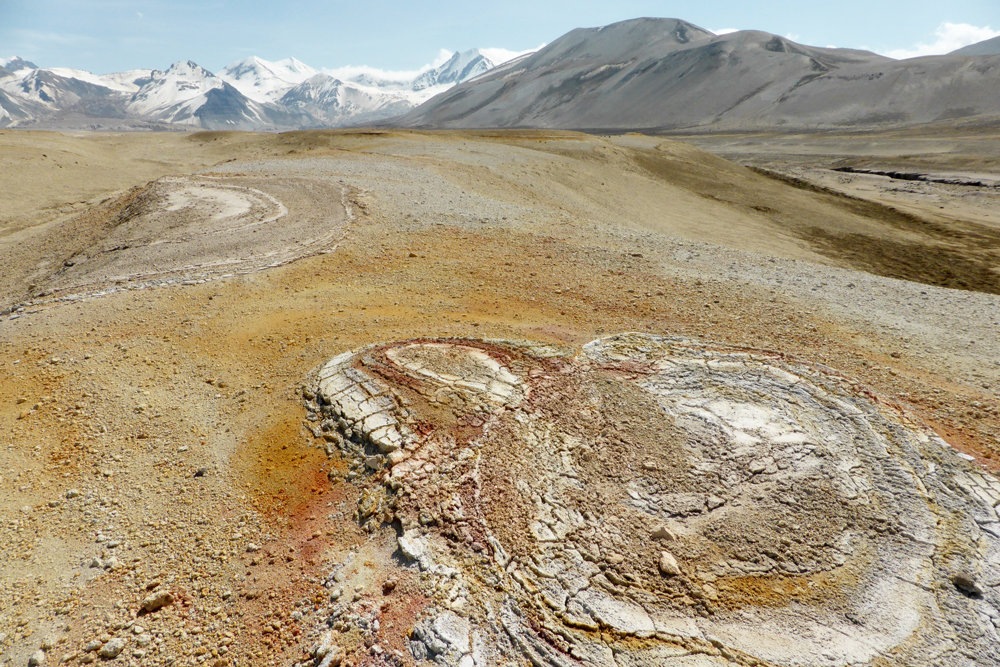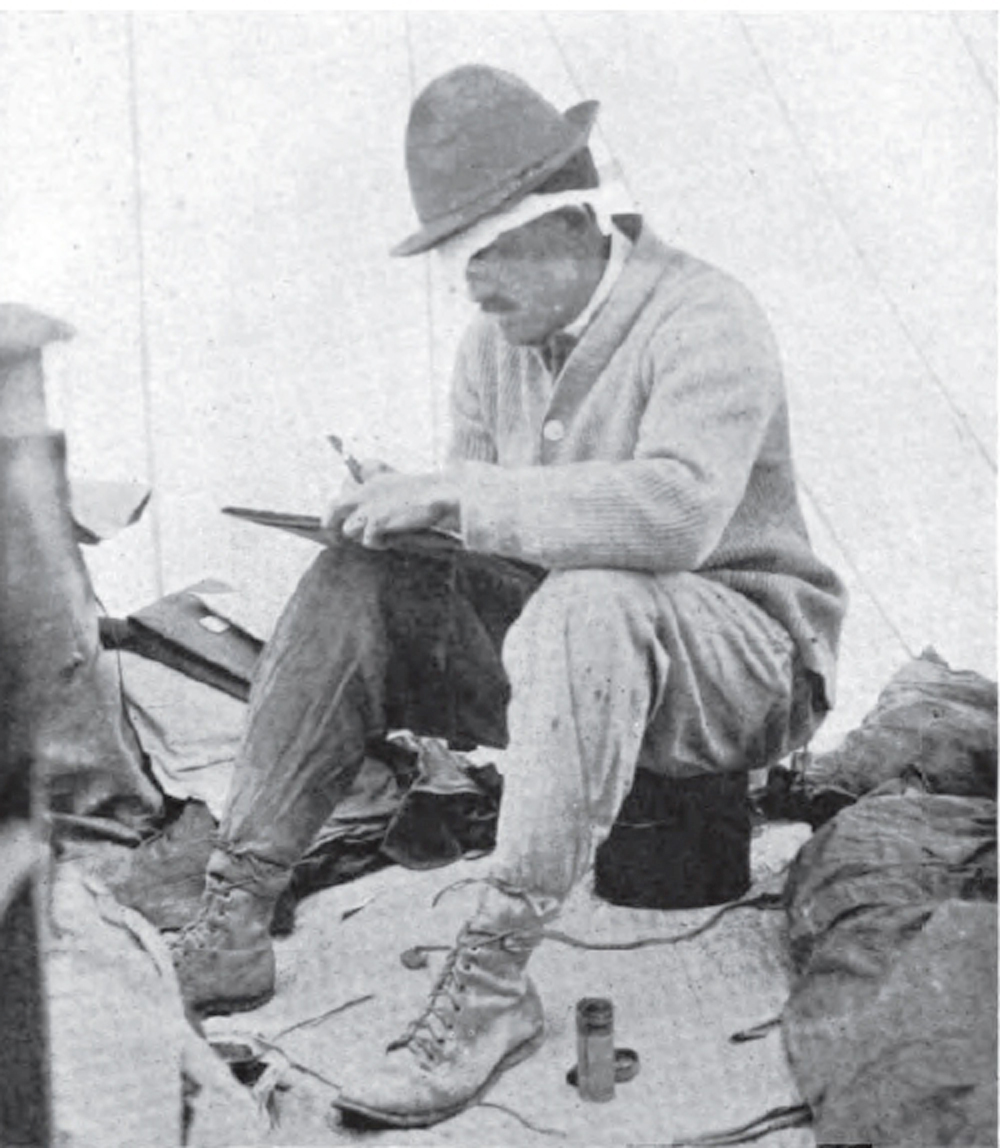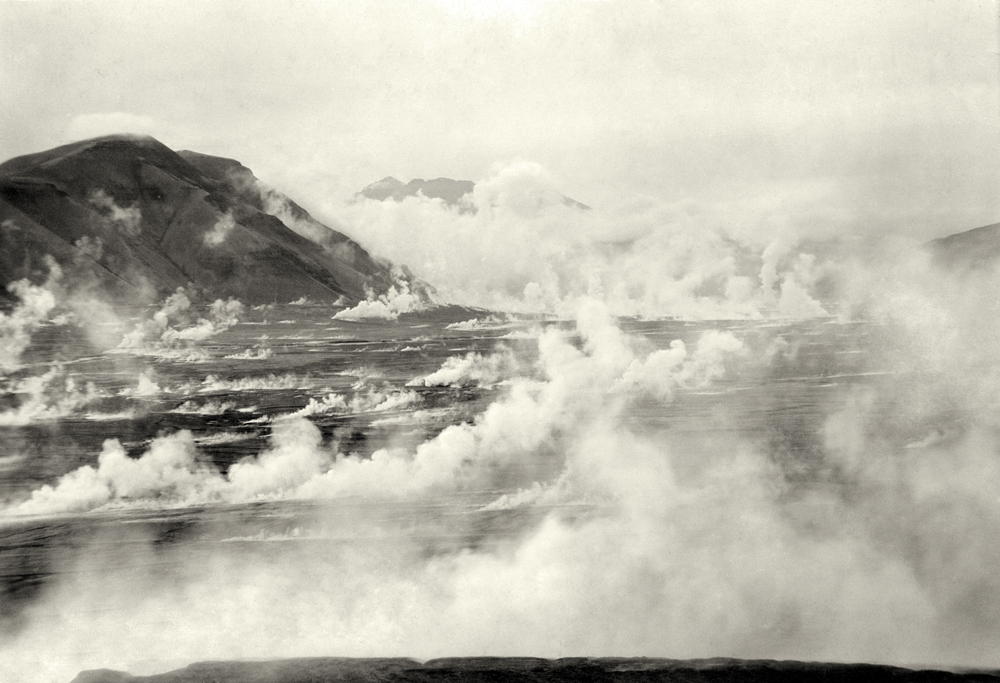 Griggs wades though thigh deep quicksand in the Katmai River. National Geographic/Fulton.
Griggs wades though thigh deep quicksand in the Katmai River. National Geographic/Fulton.
On June 6, 1912, Novarupta Volcano exploded in a remote valley on the northern Alaska Peninsula. For 60 hours, ash and pumice darkened skies across the region, pyroclastic flows and surges buried Ukak River valley, and the summit of Mount Katmai collapsed forming a 2000 feet (600 m) deep caldera.
The ash and pumice released during the eruption represents over 3 mi3 (13.5 km3) of magma beneath the earth, 30 times more magma than the 1980 Mount Saint Helens eruption. The Novarupta-Katmai eruption was the largest of the 1900s and one of the five largest in recorded history.
 An extinct fumarole on the valley floor, 100 years after the 1912 eruption. NPS/Fitz
An extinct fumarole on the valley floor, 100 years after the 1912 eruption. NPS/Fitz
The eruption created a harsh land of abandoned villages, ghost forests, quicksand, and ash covered mountains. Even so, a few people were eager to explore the transformed terrain. Curious about vegetative recovery in the wake of such a large scale eruption, Robert Griggs organized and led expeditions funded by the National Geographic Society into the heart of the area. He discovered far more than imagined.
In July 1916, Griggs and his team suffered through exhaustive slogs in quicksand, punishing wind storms, and two treacherous climbs to reach the rim of Mount Katmai’s newly formed caldera. On July 31, the day after their second Mount Katmai ascent, Griggs continued toward Katmai Pass. Temporarily leaving behind one companion who “was incapacitated by too many flapjacks,” he and L.G. Folsom traversed a deeply gullied notch between Mount Trident and Mount Mageik.
 Griggs waits out an intense dust storm in his tent, after being struck in the eye by a piece of flying pumice. National Geographic/Church.
Griggs waits out an intense dust storm in his tent, after being struck in the eye by a piece of flying pumice. National Geographic/Church.
Just as Griggs was ready to turn back, he caught sight of a small volcanic steam vent in Katmai Pass. After warming his hands in this small fumarole, he spotted another, much larger one nearby. Curiosity hastened him forward. In the January 1917 issue of National Geographic Magazine, Griggs described what he saw next.
“The sight that flashed into view...was one of the most amazing visions ever beheld by mortal eye. The whole valley as far as the eye could reach was full of hundreds, no thousands--literally tens of thousands--of smokes curling up from its fissured floor.It was as though all the steam engines in the world, assembled together, had popped their safety valves at once and were letting off steam in concert.”
Griggs discovered the Valley of Ten Thousand Smokes, an amazing 46 mi2 (120 km2) steaming landscape. Later that night, he found sleep impossible—his mind restless with thoughts. Griggs later described himself as “overawed” but he “had seen enough to know that we had accidentally discovered one of the great wonders of the world.”
 The Valley Of Ten Thousand Smokes
The Valley Of Ten Thousand Smokes
What to do with such a place? Citing Yellowstone as an example Griggs answered, “I recognized at once that the Katmai district must be made a great national park accessible to all the people.” Through the National Geographic Society, Griggs lobbied for permanent protection of the Katmai region. Two years after the discovery of the Valley of Ten Thousand Smokes, Katmai National Monument was established by presidential proclamation.
The National Park Service celebrates its centennial in 2016, but the national park idea was born long before in the minds and actions of citizens. It lived in the mind of Robert Griggs during his explorations of Katmai. He “found” Katmai and became Katmai’s first modern day champion. Robert Griggs’s discovery of and subsequent efforts to protect the Valley of Ten Thousand Smokes exemplifies the national park idea. This idea continues to live in the hearts and minds of people all over the world. How will you #FindYourPark?
